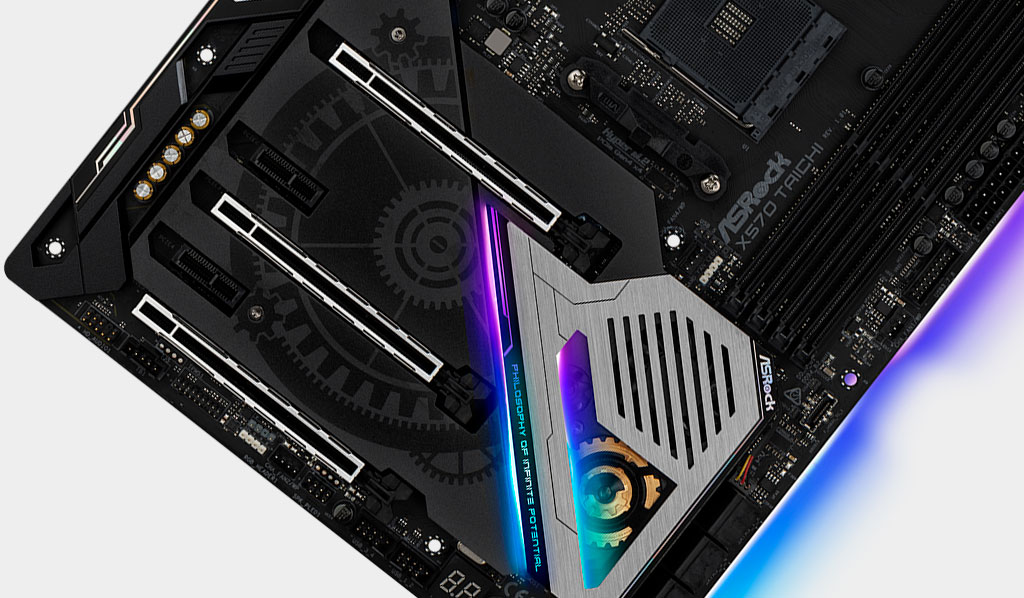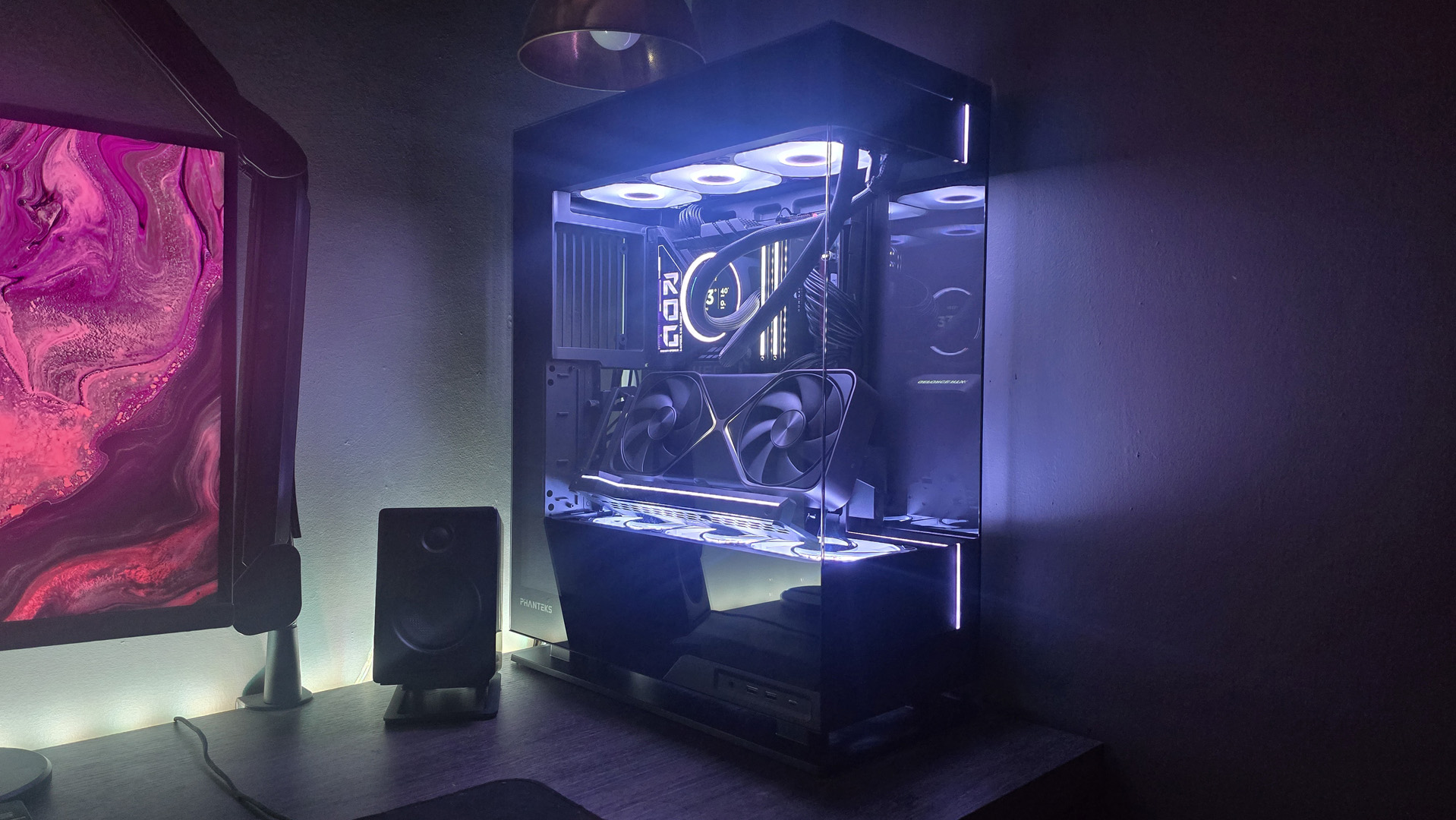PCI Express 6.0 paves the way for faster SSDs and graphics cards in 2021
The standards body in charge of overseeing the PCI Express protocol is following an aggressive upgrade schedule.

It will still be another few weeks before the very first consumer motherboards supporting PCI Express 4.0 (PCIe 4.0) arrive in retail, courtesy of AMD's Ryzen 3000 CPUs and X570 motherboards, but the standards body that oversees the spec is already looking ahead PCIe 6.0.
PCI-SIG (or Peripheral Component Interconnect Special Interest Group) announced this week what is essentially a draft spec for PCIe 6.0. What about PCIe 5.0? That's not being skipped—in case you missed it, PCI-SIG formally ratified a finalized PCI 5.0 spec last month.
I wrote at the time that AMD Ryzen support for PCIe 4.0 was already last generation, and from a technical standpoint, that's true. That was meant to be tongue-in-cheek, though, because even as of this writing, you can't run out and buy a PCIe 4.0 motherboard.
So, what's all the fuss about with PCIe and these new standards? Well, with the arrival of PCIe 6.0 in a couple of years, bandwidth will again double. Here's an overview of the PCIe spec and the bandwidth changes (based on full duplex):
- PCIe 1.0 (2003): 2.5GT/s transfer rate, ~8GB/s x16 bandwidth
- PCIe 2.0 (2007): 5.0GT/s transfer rate, ~16GB/s x16 bandwidth
- PCIe 3.0 (2010): 8.0GT/s transfer rate, ~32GB/s x16 bandwidth
- PCIe 4.0 (2017): 16.0 GT/s transfer rate, ~64GB/s x16 bandwidth
- PCIe 5.0 (2019): 32.0 GT/s transfer rate, ~128GB/s x16 bandwidth
- PCIe 6.0 (2021): 64.0 GT/s transfer rate, ~256GB/s x16 bandwidth
"Continuing the trend we set with the PCIe 5.0 specification, the PCIe 6.0 specification is on a fast timeline," said Al Yanes, PCI-SIG chairman and president. "Due to the continued commitment of our member companies, we are on pace to double the bandwidth yet again in a time frame that will meet industry demand for throughput."
For now, these bandwidth gains mostly benefit storage and graphics on consumer systems, at least in theory. On paper, doubling bandwidth looks like a big deal. In real-world usage, many users aren't likely to notice a big difference. Why?
For one, PCIe bandwidth has not been a bottleneck for graphics cards. That's to say there is not going to be a significant gain in performance from plugging a GPU into a PCIe 4.0 motherboard versus a PCIe 3.0 motherboard. That will likely change at some point, but for today's GPUs, the PCIe bus just isn't a choke point.
The biggest gaming news, reviews and hardware deals
Keep up to date with the most important stories and the best deals, as picked by the PC Gamer team.
Storage is a slightly different matter. We've seen several drive makers announce PCIe 4.0 SSDs that boast rated sequential read speeds of up to 5,000MB/s. That's much faster than the current crop of NVMe SSDs, the fastest of which typically top out at around 3,500MB/s. PCIe 5.0 and PCIe 6.0 blow the doors wide open for even speedier drives.
Even so, the impact on gaming is not a big one. A comparatively pokey SATA-based SSD is still good enough for games, with read speeds topping out at around 550-580MB/s. Those much faster transfer rates can benefit other areas, particularly if you're routinely shuffling around large files on your home network. But for the average user, it amounts to a lot of untapped potential.
While gaming is not the biggest beneficiary of PCI-SIG's aggressive update schedule, there are other areas that stand to gain from PCIe 6.0 (and beyond).
“PCI Express technology has established itself as a pervasive I/O technology by sustaining bandwidth improvements for five generations over two decades," siad Dennis Martin, an analyst at Principled Technologies. "With the PCIe 6.0 specification, PCI-SIG aims to answer the demands of such hot markets as artificial intelligence, machine learning, networking, communication systems, storage, high-performance computing, and more."

For the most part, those areas fall out of the consumer realm. Still, it's nice to see PCI-SIG not resting on its laurels. As it pertains to that, Mark Hachman at PCWorld made an interesting observation, saying that PCI-SIG's update schedule is similar to Moore's Law on the CPU side. Moore's Law dictated that the number of transistors in a processor would double every two years. PCI-SIG, meanwhile, envisions doubling bandwidth every three years, through at least 2025.
Other than raw bandwidth gains, PCIe 6.0 introduces a few other features, such as more efficient handling of data (our friends at AnandTech have a detailed breakdown of the technical bits, if you're curious). And like the previous specs, it's backward compatible—when the time comes, you'll still be able to use a PCIe 5.0 or earlier device in a PCIe 6.0 motherboard.
And when will that be? Even if the standard is ratified next year, it could be some time before the industry actually supports PCIe 6.0. Just look at PCIe 4.0, which had a preliminary spec all the way back in 2011 but wasn't finalized until 2017. Two years later and we're finally seeing the first PCIe 4.0 GPUs and motherboards next month. Don't be surprised if it takes even longer to move to PCIe 5.0 and 6.0 and we start seeing some of the best SSDs for gaming and best NVMe SSDs utilizing all that bandwidth.
Paul has been playing PC games and raking his knuckles on computer hardware since the Commodore 64. He does not have any tattoos, but thinks it would be cool to get one that reads LOAD"*",8,1. In his off time, he rides motorcycles and wrestles alligators (only one of those is true).


